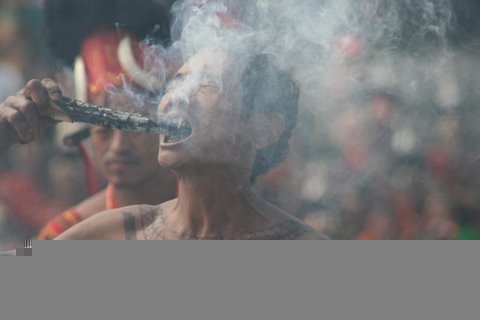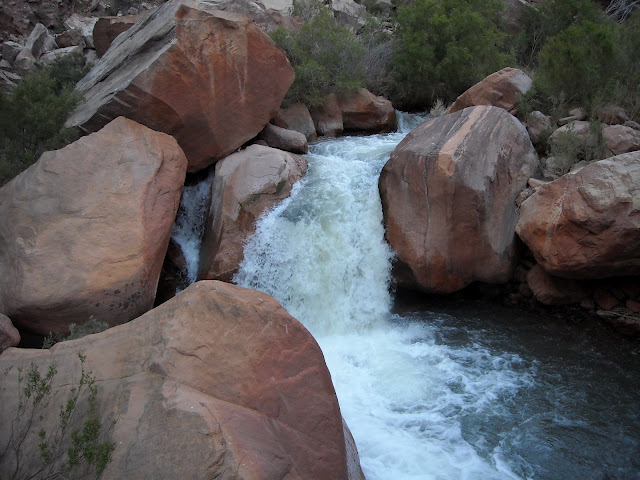Hornbill festival- from Chain Reaction
December 21, 2012Fried Eye note :- Dear readers, you must have noticed that recently we have had a tie up with The Seven Sisters post where in the five best posts or articles of the edition are featured in their Website. The seven sisters post is a popular daily from the north east India and it is an honour for us to be associated with it. It will also benefit the authors whose write ups are featured as they will get further exposure. But since this is a recent development , some of our best missed the chance. In order that they get a fair chance we are reposting some of our best from the archives.
As it is the Hornbill Festival season, we begin with this one from one of our star writers Shahwar Hussain .
Nagaland has always been touted as the Land Of Festivals…and now they have a brand new catch phrase – “Festival Of Festivals” as the state machinery referred to the annual Hornbill Festival held from 1st to 7th December.
The Hornbill Festival, held at the Kisama Heritage Village, certainly is a fest for the eyes – a riot of colours and costumes. Nagaland has an amazingly colourful culture and unique tradition…and this, coupled with a sense of the exotic and mysterious, draws in the crowd by the hordes especially during the Hornbill Festival.
What had initially started as a five day event 11 years back, has now graduated into a seven day event….and by the look of it this year, it has all the potential to grow into an even bigger event.
Not for nothing is Nagaland called “The Land Of Festivals”. There are 16 major tribes and numerous sub tribes in the state and every month one tribe or the other celebrates its festival.
The Hornbill Festival brings all the tribes of the state under one umbrella to showcase their rich culture and tradition. Of course the rituals are not as elaborate or as spontaneous as those held at the villages and at particular times of the year where the whole village participates in the rituals. But the Hornbill Festival lets you see the festivals and customs of the different tribes through a very wide window indeed.
Don’t get me wrong when I say that the rituals are not spontaneous. They are performed with a great deal of zest and pride. As Mr Yitachu, Parliamentary Secretary, Tourism, explained, “…a particular village that performs at the Festival might get its next chance after about 40 or 50 years and some even more. Each tribe is represented by a particular village each year and since the bigger tribes like the Ao and Angami have many villages, it would take a very long time indeed for a particular village to perform again at Kisama”. Many of the present day performers would not live to get the privilege to perform again at the festival and thus the pride.
The primary focus of the Hornbill Festival is to bring all the tribes of Nagaland in one platform and create a sense of unity among the different tribes and also to resurrect some of the culture and tradition that were dying a slow but sure death.
Although an overwhelming dances and rituals were based on agriculture and fertility, the warrior tribes like the Konyak, Chang, Yimchunger, Sema and a few other displayed some amazing war dances and head hunting rituals that were practiced in the days of yore…complete with log drum beating, mock fighting and torching of other villages.
The 2nd day of the festival was meant for performers from the rest of the North Eastern states and what a fantastic show they put up throughout the day.
But if you think that the Hornbill Festival is all about dances and more dances…you are mistaken. There were ethnic Naga cuisine, exquisite handicraft and handloom, kids carnival, night bazaars, music – both traditional and contemporary, a superb show of fusion music comprising musicians from all the states of the North Eastern region, literary fest, fashion shows, beauty contest and fun events like climbing a greased bamboo pole, pork fat and Naga King Chilli eating contests which saw a whole lot of contestants crying “FIRE”!!
Stalls with Naga cuisine drew crowds like moths to fire. The lifting of the Protected Area Permits for foreigners resulted in a huge number of western tourists flocking to the Heritage Village and making a beeline to the ethnic food stall. Never mind the fire chilly, they had the sweet rice beer to wash it down!!!
Music is an integral part of Naga culture and the Rock Contest held as part of the festival was a huge draw. The contest, held by the Music Task Force set up by the Government to promote music in the state, is probably one of the biggest, if not the biggest, of its kind in the country. I am sure the bands didn’t mind the freezing cold as they performed under the open skies for the top prize of Rs 5 lakhs!
The other big draw was the Peace Rally to commemorate the battle of Kohima. The WWII Jeeps and their crew on period costumes drew in a lot of crowd. The Chief Minister Mr Neiphiu Rio in one of the jeeps led the rally. I guess his security guards must have had the jitters because the participants including the all women team, were carrying period guns and one could hardly make out the difference between the real and a fake gun!!
Seven days were over in a flash and the finale was a grand affair with each tribe lighting a bonfire. As the sun dipped over the hills at Kisama, the bonfire lit up the arena and the skies were filled with the war cries of the tribes as they all danced around the fire.
“Till next year” they said and by the look of it, it certainly is going to be a tourist magnet…definitely, a bigger magnet!
You can read rest of the articles from the Chain reaction series here
We welcome your comments at letters@friedeye.com














thank you . hope you keep on visiting us
congrts Fried Eye!
wish you touch the new heights and set new scales 🙂